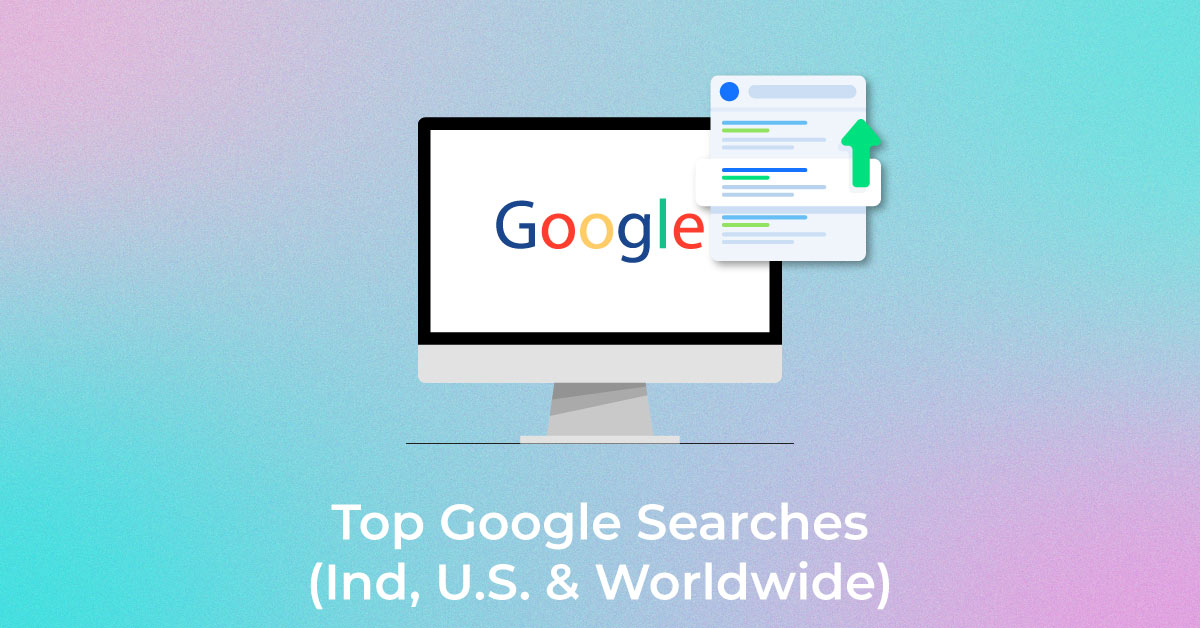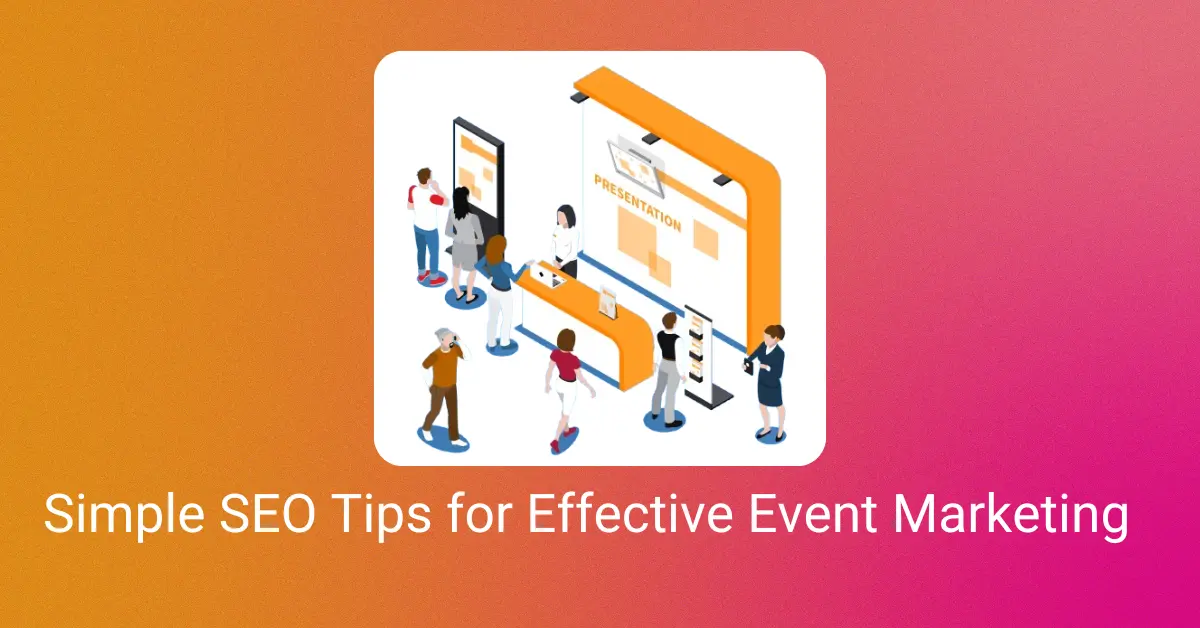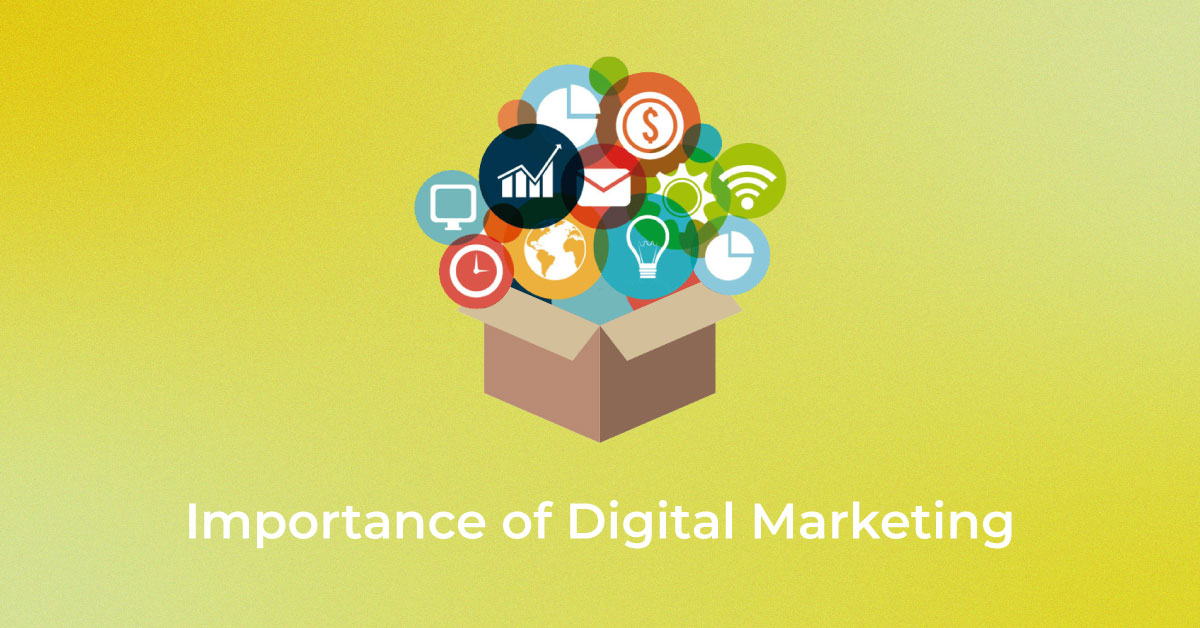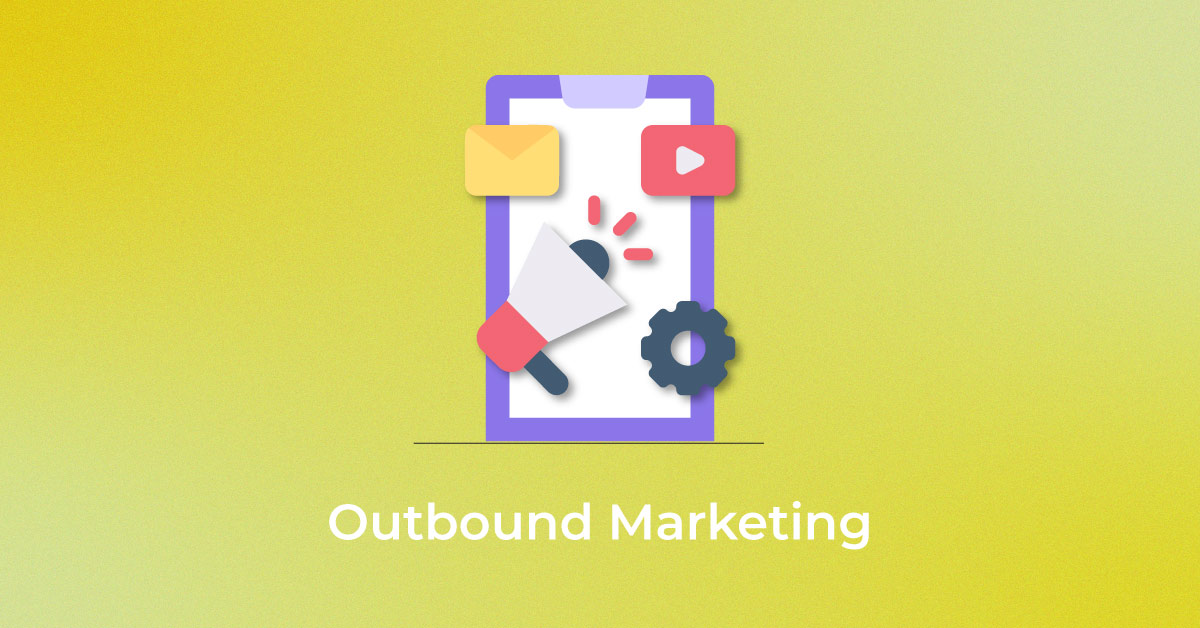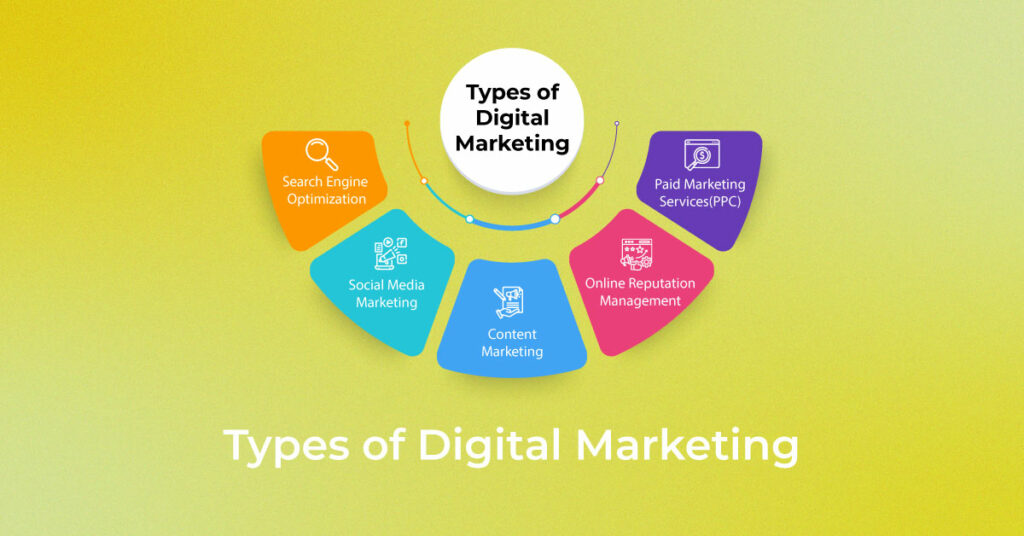What is Digital Marketing?
Digital marketing involves using the internet and digital channels to promote brands and engage with potential customers. It includes different types, such as Affiliate Marketing, Content Marketing, Email Marketing, Marketing Analytics, Mobile Marketing, Pay-per-click, Search Engine Optimization (SEO), and Social Media Marketing.
From the second we wake up to the moment we doze off, the first and last thing we do is check our phones. It is a device that keeps us connected to our near and dear ones through the internet, making it impossible to live without. With this common understanding, several young minds of today are using digital marketing as a means to grab the attention of online tool users. Thus, the inevitable power of digital tools and platforms is impossible to ignore. This couldn’t be more true as brands are trying to make the most of these tools to reach out to a wide range of audiences and occupy the highest spot on search engines.
To further elaborate on what we are saying, digital marketing is the practice of promoting products, services, or brands through the use of digital technologies, such as the World Wide Web, social media, mobile applications, and other forms of online media. In today’s fast-paced and increasingly interconnected world, digital marketing has become an essential tool for businesses of all sizes.
Unlock higher rankings, quality traffic, and increased conversions through tailored award-winning SEO strategies.
Elevate your web presence by Infidigit’s SEO solutions.
Unlock higher rankings, quality traffic, and increased conversions through tailored award-winning SEO strategies.
What types of digital marketing are best for your business?
Among the many types of online marketing tools at the disposal of brands, investing in just the ones designed for your business would be the best business decision. In order to figure out what would be the ideal choice to put your brand name on the digital world map, here are a few questions to ask yourself before you can make an informed decision.
- What is your ultimate business goal?
- What is your set budget for digital marketing?
- Do you have a concrete brand voice?
- Where do you see the digital footprint of your business in the next 5 years?
10 Types of Digital Marketing
Digital Marketing is divided majorly into 10 types. Here is the list of various types of digital marketing you should be aware of:
- Search Engine Optimization (SEO)
- Pay Per Click (PPC)
- Social Media Marketing (SMM)
- Content Marketing
- Email Marketing
- Influencer/ Affiliate Marketing
- Viral Marketing
- Mobile Marketing
- Native Advertising
- Marketing Automation
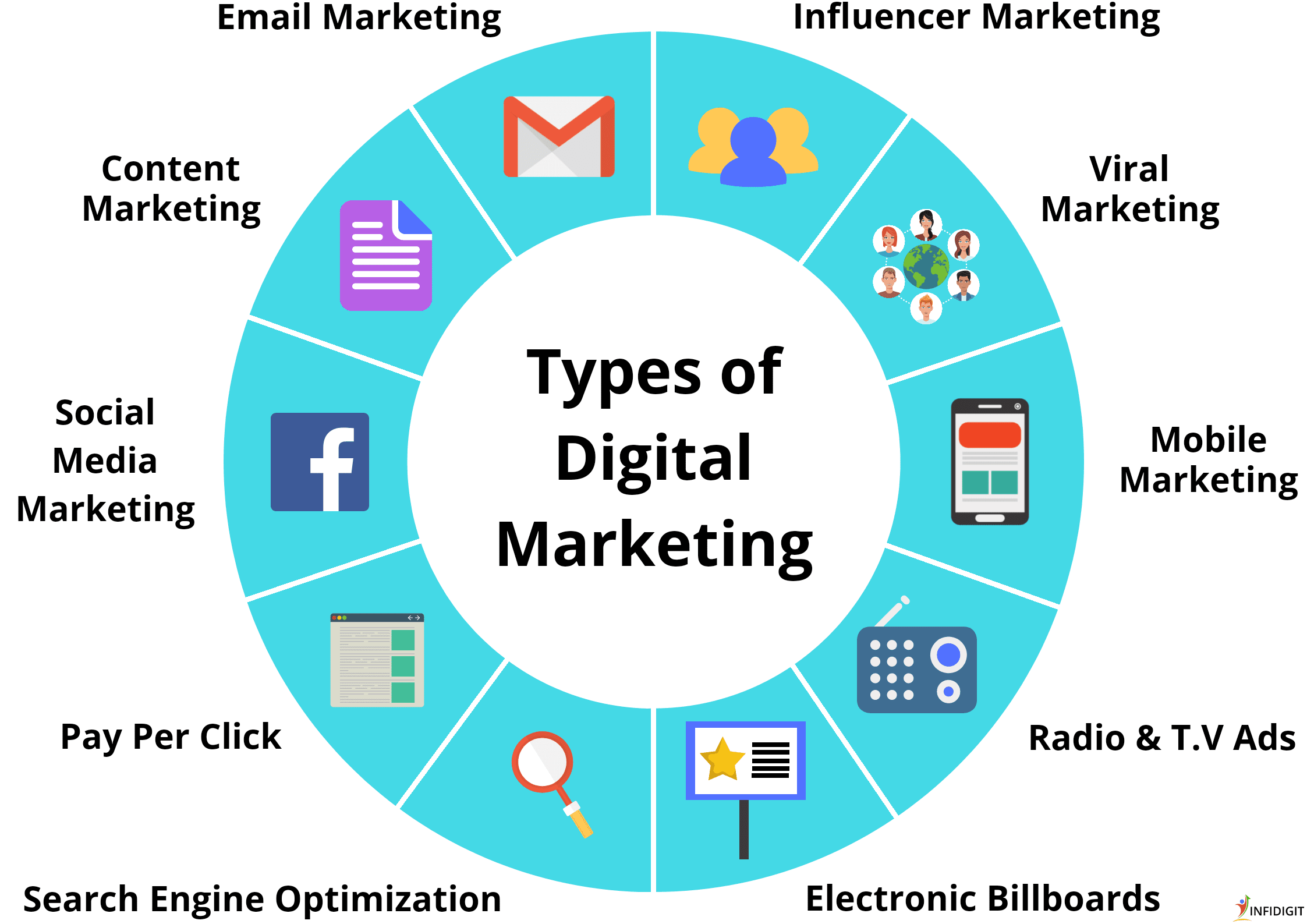
1. Search Engine Optimization (SEO)
Search Engine Optimization (SEO) is a digital marketing strategy focused on improving a website’s visibility on search engines like Google. By optimizing website elements such as content, keywords, links, and technical performance, SEO helps attract more organic, or unpaid, traffic from users searching for relevant information. SEO consists of both on-page strategies—like using the right keywords in content—and off-page tactics, such as building quality backlinks from other sites. With effective SEO, businesses can rank higher in search results, increase their online presence, and reach potential customers when they’re actively looking for products or services.

Key SEO Techniques
Effective SEO relies on a variety of techniques to boost a website’s visibility in search results. Key techniques include:
- Keyword Research – Identify relevant search terms for your audience.
- On-Page Optimization – Use keywords strategically in titles, headers, and content.
- Technical SEO – Improve site speed, mobile-friendliness, and crawlability.
- Link Building – Gain quality backlinks from reputable websites.
- Content Creation – Develop valuable, relevant content to engage and inform users.
- User Experience (UX) Optimization – Ensure easy navigation and a positive user experience.
Benefits of SEO for Digital Marketing
SEO offers numerous benefits that make it an essential part of digital marketing. By improving your website’s visibility on search engines, SEO helps attract targeted, organic traffic—users actively searching for what you offer.
Here are the benefits of SEO for digital marketing:
- Increased Organic Traffic – Attracts targeted traffic from users actively searching for your products or services.
- Improved Brand Awareness – Higher search rankings boost visibility and help people recognize your brand.
- Enhanced Credibility and Trust – Users trust websites that appear at the top of search results.
- Long-Term Results – Unlike paid ads, SEO delivers lasting traffic and visibility.
- Cost-Effective – SEO provides high ROI by reducing reliance on paid advertising.
- Better User Experience – SEO optimization improves site navigation, speed, and accessibility, leading to higher engagement.
2. Pay Per Click (PPC)
Pay Per Click (PPC) is a digital advertising model where advertisers pay a fee each time their ad is clicked. It’s commonly used in search engine advertising, such as Google Ads, where businesses bid on keywords relevant to their products or services. When a user searches for these keywords, the ads appear at the top or side of the search results. PPC allows businesses to target specific demographics and track ad performance in real time, ensuring optimal ad spend. It’s an effective way to drive immediate traffic to a website and generate leads, especially when combined with a well-executed SEO strategy.

How PPC Works and Drives Traffic
PPC works by allowing advertisers to bid on specific keywords that trigger their ads when users search for those terms. Once an ad is clicked, the advertiser pays a set amount, usually based on the competition for that keyword. The goal is to drive targeted traffic to a website quickly, often resulting in higher conversions. Advertisers can set budgets, track performance, and refine campaigns for better results. By targeting the right audience at the right time, PPC ensures that ads reach users actively interested in your products or services, delivering immediate traffic and potential leads.
Benefits and Key Components of PPC
Pay-Per-Click (PPC) is a powerful advertising model that drives immediate, targeted traffic to your website. By leveraging well-structured PPC campaigns, businesses can achieve measurable results and boost brand visibility quickly.
Benefits of PPC:
- Immediate Traffic – PPC campaigns generate instant traffic to your site, unlike organic strategies that take time.
- Targeted Audience – Ads can be precisely targeted based on location, device, time of day, and user behavior.
- Measurable Results – PPC provides detailed analytics, helping businesses track ROI and adjust campaigns for optimal performance.
- Brand Visibility – Ads appear at the top of search results, increasing brand awareness and credibility.
Key Components of PPC:
- Keywords – Choosing the right keywords to target is crucial for ad success.
- Ad Copy – Crafting compelling ad copy to entice users to click.
- Landing Pages – Ensuring that landing pages are relevant and optimized for conversions.
- Bidding Strategy – Setting an appropriate bid to compete in auctions and stay within budget.
- Analytics – Monitoring performance to optimize campaigns and maximize ROI.
3. Social Media Marketing (SMM)
Social media marketing is the practice of promoting a brand, product, or service through social media platforms to connect with a targeted audience. It involves crafting and sharing engaging content that educates, entertains, and attracts users, ultimately driving traffic to a website or converting them into loyal customers.
Given the explosive growth and widespread use of social media, it has become a cornerstone of modern digital marketing strategies. By leveraging platforms like Facebook, Instagram, Twitter, and LinkedIn, businesses can build brand awareness, foster customer relationships, and increase sales. Effective social media marketing not only boosts visibility but also provides valuable insights into customer behavior and preferences, enabling more personalized marketing efforts.

Popular Social Media Platforms for Marketing
Social media has become a cornerstone of digital marketing, offering businesses a way to engage with audiences directly. Popular platforms for marketing include:
- Facebook: Great for broad audience targeting, brand awareness, and lead generation through ads, groups, and posts.
- Instagram: Ideal for lifestyle and e-commerce brands to showcase products via photos, stories, and influencer partnerships.
- Twitter: Perfect for real-time engagement, trending conversations, and sharing updates.
- LinkedIn: Best for B2B marketing, networking, sharing professional content, and generating leads.
- TikTok: A fast-growing platform for creative, short-form videos, targeting Gen Z and millennials.
- Pinterest: Visual platform for lifestyle, fashion, and home decor brands to drive traffic through pins.
- YouTube: Ideal for in-depth content, tutorials, and ads to build brand presence and educate consumers.
- Snapchat: Short-lived content and ads for connecting with Gen Z.
- Reddit: Engage in niche discussions and build trust through subreddit participation.
- WhatsApp: Offers customer support, updates, and personalized communication with clients.
How Social Media Marketing Boosts Brand Awareness
Social media marketing plays a crucial role in increasing brand awareness by allowing businesses to reach a large, engaged audience. Through consistent, relevant posts and targeted ads, brands can introduce their products or services to potential customers in a natural, interactive way. Social media platforms offer tools like hashtags, influencers, and sponsored content to amplify visibility. By engaging with users through comments, shares, and stories, businesses can foster a sense of community, making their brand more recognizable. Over time, this continuous exposure on social platforms helps build trust, credibility, and a loyal customer base.
4. Content Marketing
Content marketing is a strategic approach focused on creating and sharing valuable, relevant content to attract and engage a target audience. It aims to provide helpful information rather than directly promoting products or services. Through blog posts, videos, infographics, podcasts, and more, businesses can educate their audience, solve problems, and build relationships. Effective content marketing enhances brand awareness, drives organic traffic, and nurtures leads over time. By consistently delivering high-quality content, brands can position themselves as experts in their industry and foster trust, ultimately leading to conversions and long-term customer loyalty.

Content Types Used in Digital Marketing
Digital marketing relies on a variety of content types to engage audiences across different platforms. Some of the most effective content types include:
- Blog Posts – Informative articles that help educate, entertain, and solve problems for your audience while boosting SEO.
- Videos – Engaging and visually appealing content that works well on platforms like YouTube, Instagram, and TikTok.
- Infographics – Visual representations of data and information, ideal for simplifying complex topics and making them shareable.
- Podcasts – Audio content that allows brands to connect with audiences on the go, building trust through valuable discussions.
- Social Media Posts – Short-form content used for quick updates, promotions, and interaction with followers on platforms like Facebook, Instagram, and LinkedIn.
- Ebooks/Whitepapers – In-depth resources that provide valuable insights, often used for lead generation through gated content.
- Case Studies – Real-life examples showcasing how your product or service has solved a problem, helping build credibility and trust.
Why Content Marketing is a Powerful Tool
Content marketing is a powerful tool because it focuses on delivering value to your audience, which builds trust and encourages long-term relationships. Unlike traditional advertising, content marketing nurtures potential customers by providing informative, engaging, and relevant content. It helps increase brand awareness, drive organic traffic, and establish authority in your industry. With content marketing, businesses can also improve their SEO rankings by consistently publishing high-quality content. By addressing customer pain points and providing solutions, content marketing fosters a sense of loyalty, making it an essential strategy for sustained growth and customer retention.
5. Email Marketing
Email marketing is a direct and effective way to communicate with your audience, delivering personalized content right to their inbox. It helps businesses nurture leads, build relationships, and encourage repeat purchases through targeted email campaigns. With email marketing, you can segment your audience based on their preferences, behaviors, and demographics to send tailored messages that resonate. Whether it’s promoting products, sharing valuable content, or offering exclusive discounts, email marketing helps maintain engagement and drive conversions. It also provides measurable results, allowing businesses to track open rates, click-through rates, and overall campaign performance to optimize future efforts.
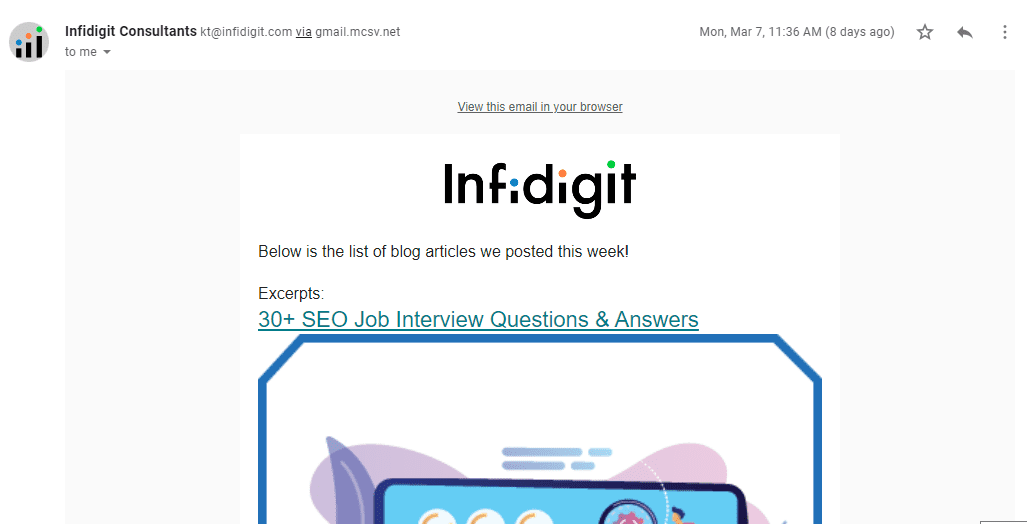
Types of Email Marketing
There are various types of email marketing campaigns that businesses can use to communicate with their audience, including:
- Promotional Emails: Promotional emails are used to promote a product, service, or offer to the audience. These emails typically contain a call-to-action (CTA) that encourages the recipient to take a specific action, such as making a purchase or signing up for a free trial.
- Newsletter Emails: Newsletter emails are used to provide subscribers with updates, news, and content related to the business or industry. These emails typically contain a mix of curated and original content, and may also include promotional messages.
- Welcome Emails: Welcome emails are sent to new subscribers to introduce them to the business, provide them with relevant information, and encourage them to engage with the brand.
- Abandoned Cart Emails: Abandoned cart emails are sent to customers who have added items to their cart but failed to complete the purchase. These emails typically include a reminder of the items left in the cart and may offer a discount or incentive to encourage the customer to complete the purchase.
Effective Email Campaign Strategies
To run a successful email campaign, businesses should implement targeted and well-planned strategies:
- Segmentation – Divide your email list based on customer demographics, behavior, or purchase history to send personalized content that resonates with each group.
- Compelling Subject Lines – Craft attention-grabbing subject lines that encourage recipients to open your emails.
- Clear Call-to-Action (CTA) – Ensure every email has a strong, clear CTA guiding recipients toward the desired action, whether it’s making a purchase or reading more content.
- A/B Testing – Experiment with different subject lines, content formats, and CTAs to determine what works best and optimize future campaigns.
- Mobile Optimization – Design emails to be mobile-friendly, ensuring they display correctly and are easy to read on smartphones.
- Consistent Scheduling – Send emails regularly but avoid overwhelming recipients. Consistency helps maintain engagement without being intrusive.
- Personalization – Use the recipient’s name and tailored content to make emails feel more relevant and engaging.
How Email Marketing Boosts Conversion Rates
Email marketing is highly effective in boosting conversion rates by delivering targeted, personalized messages to a specific audience. By segmenting your email list, you can send relevant offers and content that meet the needs and interests of different groups. Personalized emails make recipients feel valued, increasing the likelihood of engagement and conversions. Additionally, email campaigns with clear calls-to-action (CTAs) guide users toward completing a desired action, whether it’s making a purchase, signing up for a service, or downloading a resource. By tracking metrics like open rates, click-through rates, and conversions, businesses can refine their strategy to continually improve results.
6. Influencer and Affiliate Marketing
Influencer and affiliate marketing are powerful strategies that leverage third-party endorsements to boost brand visibility and drive sales.
- Influencer Marketing involves partnering with influential individuals on platforms like Instagram, YouTube, or TikTok. These influencers use their reach and credibility to promote your products to their followers, often through authentic content that resonates with their audience. This type of marketing builds trust and can generate direct conversions.
- Affiliate Marketing works by rewarding individuals or companies (affiliates) for driving traffic or sales to your business through their promotional efforts. Affiliates promote your products through blogs, websites, or social media, earning a commission for every sale or lead they generate.
Both strategies tap into existing audiences, making them highly effective for expanding your reach and driving results.
Differences Between Influencer and Affiliate Marketing
While both influencer and affiliate marketing involve third-party promotion, they differ in their approach and structure:
- Payment Structure:
Influencer Marketing often involves a flat fee or product compensation, with influencers paid upfront or per post for promoting a brand. Affiliate Marketing is performance-based, where affiliates earn a commission only when their referral results in a sale or lead. - Nature of Content:
Influencer Marketing focuses on building brand awareness through organic, authentic content shared by influencers, often with personal endorsements or reviews. Affiliate Marketing relies on affiliates creating content like blog posts, reviews, or product links, typically aimed at driving direct sales rather than simply building awareness. - Control Over Messaging:
Influencer Marketing allows brands to collaborate closely with influencers to craft the messaging and style of promotion. Affiliate Marketing gives affiliates more freedom to present the brand in their own way, often working independently with minimal brand involvement. - Long-term vs. Short-term Focus:
Influencer Marketing generally focuses on short-term campaigns, with influencers creating buzz and visibility around a product or service. Affiliate Marketing tends to have a longer-term focus, as affiliates continue to promote products over time and earn commissions based on performance.
7. Viral Marketing
Viral marketing is a strategy that aims to spread a message rapidly and widely, often through social media and word-of-mouth. The goal is to create content that resonates so strongly with audiences that they feel compelled to share it, resulting in exponential reach. Successful viral campaigns often evoke strong emotions, such as humor, surprise, or awe, and are highly shareable across platforms like Facebook, Twitter, and TikTok. With its potential for massive visibility at a relatively low cost, viral marketing can significantly boost brand awareness and drive traffic. However, creating viral content requires creativity and an understanding of what will captivate and engage your target audience.
How to Create Content That Goes Viral
Creating viral content involves crafting something that resonates deeply with your audience and compels them to share it. Here are key strategies to increase your chances of going viral:
- Know Your Audience – Understand their interests and emotions to craft relevant content.
- Evoke Emotions – Use humor, surprise, or inspiration to encourage sharing.
- Keep It Simple – Make content easy to understand and relatable.
- Leverage Trends – Capitalize on current events or viral challenges to boost visibility.
- Use Eye-Catching Visuals – High-quality images or videos capture attention.
- Encourage Interaction – Add CTAs that prompt shares, likes, and comments.
8. Mobile Marketing
Mobile marketing is a strategy that targets users on their smartphones and tablets through various channels like apps, SMS, and mobile websites. It includes tactics such as push notifications, in-app advertising, and mobile-optimized websites to engage users on the go. With mobile device usage continuously increasing, businesses can reach a highly engaged audience anytime, anywhere. Mobile marketing allows for location-based targeting, personalized offers, and real-time interaction, making it an effective tool for driving conversions and enhancing customer loyalty. By optimizing content for mobile experiences, businesses can ensure they stay connected with their audience wherever they are.
Mobile Optimization and its Role in Digital Marketing
Mobile optimization ensures your website is accessible and functional on mobile devices, providing a seamless experience. With more users browsing on smartphones, a mobile-friendly site improves engagement, reduces bounce rates, and boosts search rankings. In digital marketing, mobile optimization helps reach and convert more customers, enhancing overall campaign effectiveness.
Benefits of Mobile Marketing Campaigns
Mobile marketing campaigns offer several advantages for businesses:
- Increased Reach – With most consumers using smartphones, mobile marketing helps businesses reach a larger, more engaged audience.
- Real-Time Engagement – Mobile campaigns allow for immediate interaction through push notifications, SMS, or in-app messages.
- Personalization – Targeted ads and offers can be tailored to user’s preferences, locations, and behaviors, enhancing relevancy.
- Higher Conversion Rates – Mobile-optimized content makes it easier for users to take action, driving more conversions.
- Cost-Effective – Compared to traditional marketing, mobile marketing campaigns are often more affordable and offer better ROI.
9. Native Advertising
Native advertising is a form of paid media that blends seamlessly with the content surrounding it, making the ad less intrusive and more engaging for users. Unlike traditional display ads, native ads match the look, feel, and function of the platform on which they appear, such as sponsored posts on social media or recommended content on websites. This approach provides a more natural user experience, leading to higher engagement and better performance. Native advertising is effective because it provides value in a non-disruptive way, allowing brands to reach their audience without interrupting their content consumption.
Advantages of Using Native Ads
Native ads offer several key benefits for businesses:
- Higher Engagement – Seamlessly blending with content leads to more attention and interaction.
- Improved Brand Perception – Feels more authentic, boosting trust and credibility.
- Better Click-Through Rates – Higher likelihood of users clicking compared to traditional ads.
- Non-Interruptive – Provides value without disrupting user experience.
- Better ROI – Increased engagement leads to a higher return on investment.
Native ads allow brands to reach their audience effectively while enhancing the user experience.
10. Marketing Automation
Marketing automation refers to using software tools to automate repetitive marketing tasks like email campaigns, social media posting, and lead nurturing. This process helps businesses streamline their marketing efforts, improve efficiency, and deliver personalized content at scale. By automating routine tasks, companies can focus on strategy and creativity while maintaining consistent communication with their audience. Marketing automation also allows for better tracking and analysis of campaign performance, enabling businesses to refine their efforts and drive higher conversions over time.
Key Tools for Marketing Automation
Marketing automation tools help businesses streamline marketing tasks, improve efficiency, and drive better results. Here are some top tools:
- HubSpot – Automates email marketing, social media, and lead nurturing with CRM integration.
- Mailchimp – Simple email automation with segmentation and detailed analytics.
- Marketo – Advanced lead management and email automation, ideal for large enterprises.
- ActiveCampaign – Combines email marketing, automation, and CRM to enhance customer engagement.
- Pardot – B2B marketing automation by Salesforce, focused on lead nurturing and tracking.
- GetResponse – Email marketing, webinars, and landing page creation all in one.
- Sendinblue – Multi-channel automation with email, SMS campaigns, and CRM.
- Drip – An eCommerce-focused tool with personalized email workflows.
- Autopilot – User-friendly tool for automating email marketing and customer journeys.
- Ontraport – A small business tool offering email campaigns, lead tracking, and CRM.
These tools empower businesses to automate tasks, enhance customer relationships, and drive better marketing outcomes.
How Marketing Automation Improves Efficiency
Marketing automation streamlines repetitive tasks, like email campaigns and leads nurturing, saving time and reducing manual effort. It delivers personalized messages at scale and tracks campaign performance, providing insights to optimize strategies. This leads to faster execution, fewer errors, and more effective marketing.
Inbound Marketing: A Holistic Approach to Digital Marketing
Inbound marketing is a strategy focused on attracting, engaging, and delighting customers through valuable content and experiences. Instead of interrupting potential customers with traditional ads, inbound marketing draws them in by offering relevant content at each stage of their journey. It combines various tactics like SEO, content marketing, social media, and email marketing to build trust and provide solutions to customer needs. This holistic approach not only generates leads but also nurtures long-term relationships, ensuring sustainable business growth.
Key Components of Inbound Marketing
- Content Creation – Developing valuable content such as blogs, videos, and eBooks that attract and inform potential customers.
- SEO (Search Engine Optimization) – Optimizing content to improve visibility in search engine results, driving organic traffic.
- Social Media Marketing – Using platforms like Facebook, Instagram, and LinkedIn to promote content and engage with your audience.
- Lead Generation – Capturing leads through forms, offers, and calls to action that encourage visitors to share contact information.
- Email Marketing – Nurturing leads with personalized emails and targeted campaigns to move them through the sales funnel.
- Analytics and Optimization – Tracking and analyzing performance to continuously refine strategies and improve conversion rates.
These components work together to attract, engage, and convert leads into loyal customers, fostering long-term growth.
FAQs About Digital Marketing and Its Types
What is Digital Marketing?
Digital marketing refers to the use of online channels like websites, social media, email, and search engines to promote products, services, or brands. It focuses on reaching and engaging target audiences through digital platforms.
What are the top 10 types of digital marketing?
The top 10 types of digital marketing include:
- Search Engine Optimization (SEO)
- Pay Per Click (PPC)
- Social Media Marketing (SMM)
- Content Marketing
- Email Marketing
- Influencer and Affiliate Marketing
- Viral Marketing
- Mobile Marketing
- Native Advertising
- Marketing Automation
How do I choose the best type of digital marketing for my business?
Choose the best digital marketing strategy by considering your business goals, target audience, budget, and resources. Experiment with different tactics like SEO, social media, or PPC to see which generates the best results.
What is the future of digital marketing?
The future of digital marketing will focus on AI-driven personalization, voice search optimization, video content, and immersive technologies like AR/VR. Increased automation, data privacy, and advanced analytics will also play significant roles in shaping marketing strategies.
What are the benefits of digital marketing?
Digital marketing offers benefits like cost-effectiveness, global reach, targeted audience engagement, real-time analytics, and improved conversion rates. It allows businesses to track performance and optimize campaigns for better results and increased ROI.
What are the 7 C’s of digital marketing?
The 7 C’s of digital marketing are:
- Customer – Understanding your audience’s needs.
- Content – Creating valuable, relevant content.
- Context – Tailoring content to the platform.
- Connection – Engaging with customers.
- Communication – Building two-way conversations.
- Community – Fostering a loyal customer base.
- Conversion – Turning leads into customers.
What are the 7 P’s of digital marketing?
The 7 P’s of digital marketing are:
- Product – Offering valuable products or services.
- Price – Setting competitive pricing strategies.
- Place – Distributing through the right channels.
- Promotion – Using digital tactics to promote.
- People – Engaging with your target audience.
- Process – Streamlining customer interactions.
- Physical Evidence – Providing proof of quality and trust.
Popular Searches
How useful was this post?
4.3 / 5. 27










